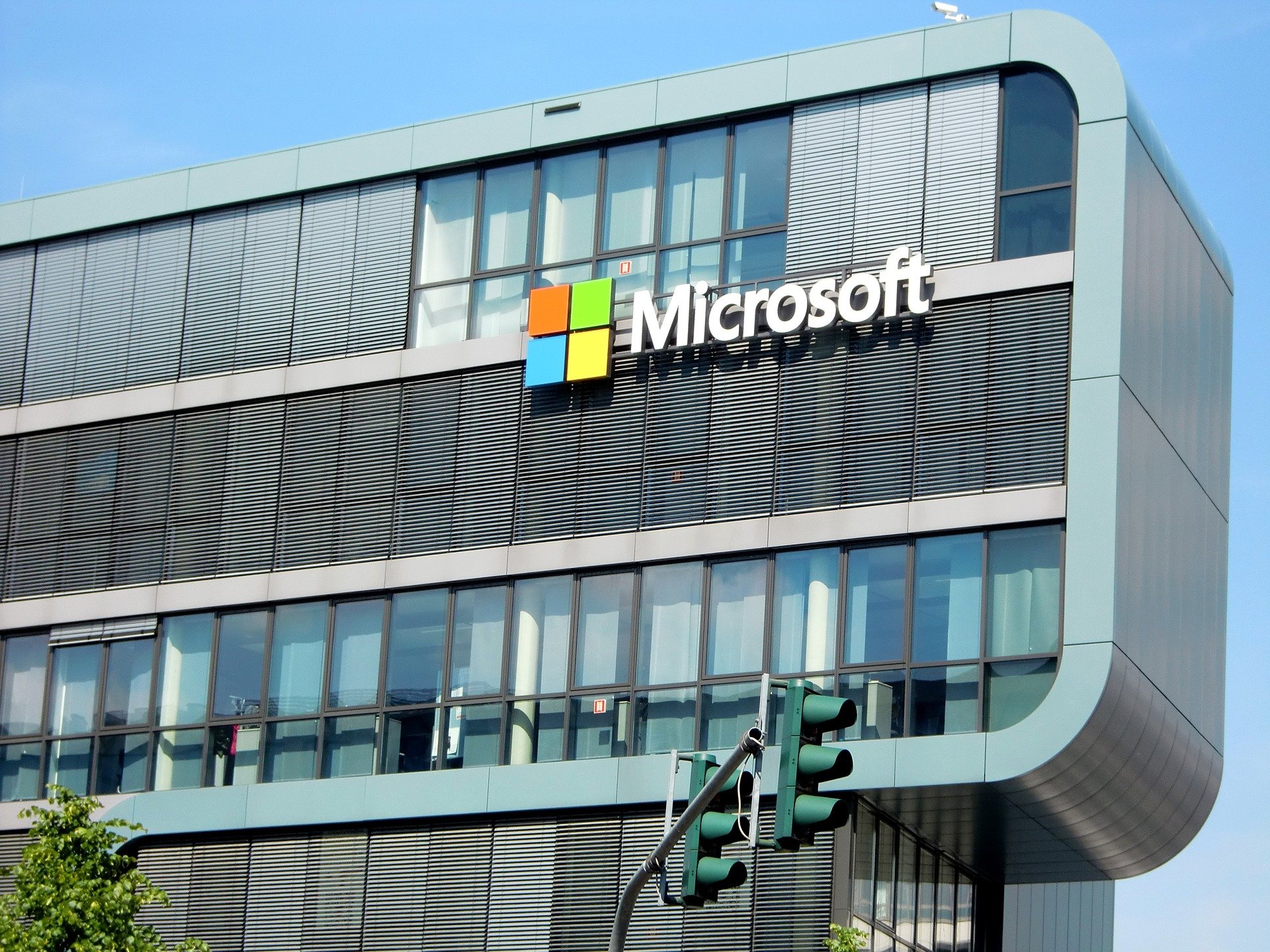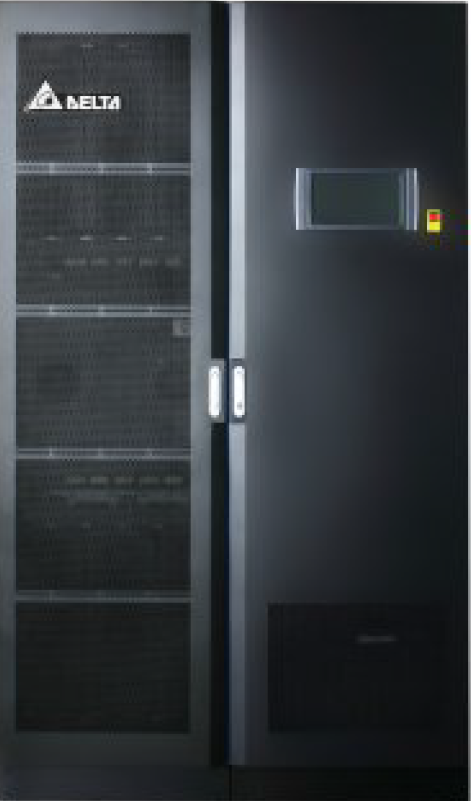Data Centre Software for Smarter Operations
Data Centre Infrastructure News & Trends
Data Centre Operations: Optimising Infrastructure for Performance and Reliability
Data Centre Software for Smarter Operations
News
News in Cloud Computing & Data Storage
Six Degrees achieves Microsoft Azure Expert MSP status
Six Degrees has announced that it has become a Microsoft Azure Expert MSP. Six Degrees is one of only eight UK organisations to be awarded this accreditation.
Six Degrees also has an Azure-aligned UK onshore Cyber Security Operations Centre (CSOC), enabling customers to enhance their cyber maturity by identifying and addressing cyber threats.
With the COVID-19 pandemic leading to the widespread adoption of remote working, and consequently an acceleration in cloud adoption, it’s unsurprising that the global public cloud infrastructure market is predicted to grow 35% to £88 billion ($120 billion) this year. However, this hasn’t come without its challenges. 2020 saw the rise and amplification of cyber-attacks, with threat actors trying to capitalise on the vulnerabilities that emerged from the shift to new ways of working. With the uncertainty around the business impact of the pandemic continuing into 2021, remaining agile and getting security right first time have never been so important.
This is why Six Degrees is today also launching its new Beyond Cloud proposition, giving customers 'the most flexible, secure cloud services available' so they can look beyond the day-to-day and focus on the future of their organisations. With its range of secure cloud services, and the new Microsoft Azure Expert MSP status, Six Degrees can now offer a coupling of managed services with security expertise to UK businesses.
David Howson, CEO, Six Degrees, says: “At Six Degrees we want to go beyond what other MSPs offer. In today’s world it’s never been more important for organisations to continuously transform and innovate. We help our customers do exactly that through best of breed technology, deep technical expertise and proven best practice service delivery. Everything we do has our industry-leading cyber security at its core giving us, we believe, the best cloud solutions available in the UK.
“Being a Microsoft Azure Expert MSP is a great validation of
our approach and solutions. We’re proud to be part of a very small group of
providers who are using the transformational power of Azure to take customers
to the next level.”
James Chadwick, Interim General Manager - Commercial Partner, Microsoft, comments: “We welcome Six Degrees to the Azure Expert Managed Services Provider (MSP) program after passing the qualifying process and we look forward to continuing to work together on delivering innovative solutions to our customers.”
Beatrice - 25 January 2021
Data
Data Centre Operations: Optimising Infrastructure for Performance and Reliability
Data Centre Software for Smarter Operations
Infrastructure Management for Modern Data Centres
What an intelligent approach to digital transformation can provide for companies
Lindsay Lucas is Managing Director of Software Solved
It might seem counter-intuitive to focus on data integration
and data management in the middle of a global pandemic, but if your company
wants to survive and thrive, that is precisely what you should be focusing on
right now.
Over the past 3-5 years, many companies have set
out on journeys to digitally transform their business processes to leverage
modern technology trends and re-imagine the relationship between
workers, IT systems and ultimately the customer.
Although digital
transformation has forced companies to change their business
models in order to adapt, it’s not necessarily the companies that are
driving this change. Instead, this change is being driven by the
customer.
Customer expectation has changed; digital transformation
has to reflect this
Inarguably, customers’ expectations, preferences, and
reasons as to how and why they choose a vendor should be at the core of
any digital transformation project. Customers are now used to an online
world where the levels of customer experience are extraordinarily high, driven
by the likes of Amazon. Customers do not differentiate between ordering online
to any other interaction they have with companies.
This, coupled with the pandemic, has meant that
sectors who were traditionally slower to embrace digital
transformation or just didn’t adapt because it wasn’t a high
priority, have had to accelerate the digitisation of their customer and
supply chain interactions and internal operations to meet the new demands
placed on them.
Whether it is a short-term fix or
long-term solution, digital transformation
initiatives have introduced a new cultural mind-set within
companies about the use of data to drive strategic and operational
decisions.
The impact of the pandemic
The pandemic has meant that there has been a dramatic
shift to working online meaning that digitalisation has seen a rapid
increase at both operational and industry levels. This is unprecedented
compared to the first digital transformation initiatives where most
companies focused on specific business processes – sales, customer service,
supply chain management.
With companies shifting to remote work models and no-contact
work environments for on-site workers, leaders need to accelerate the delivery
of digital transformation initiatives across the enterprise – enabling all
workers to leverage technology to be productive without traditional
face-to-face interactions.
Company leaders also realise that, if they want to be
effective in leading remote organisations, they need more complete, accurate,
and real-time data from across the company to make informed business
decisions. That is where data integration and transformation comes in.
Quick-fix solutions to ensure business continuity can’t be
considered for the long-term
When entire
workforces shifted to remote working at the same time,
it wasn’t practical to take a top-down, waterfall project management
approach to digital transformation, business process re-engineering, and
enterprise data integration.
Therefore, many quickly implemented short-term, quick
fix solutions to ensure immediate business continuity, understandably
putting it ahead of looking for a longer-term strategy.
With too many moving parts to manage, there hasn’t
in some cases been the time to develop an “all-encompassing
plan” before implementing it. However, quick-fix strategies to keep
companies going will most likely only work in the short-term.
Companies need to be looking at long-term solutions now
in order to maintain business continuity in the coming months rather than
relying on the short-term solutions that they have put in place. The key to
success here is to empower individual business functions
(and employees) to make decisions to optimise their work locally-within a
global (enterprise-wide) framework and set of standards that enable
cross-functional integration and data aggregation for decision making.
Data
integration is the key
Data integration is the key to
leading a dispersed organisation. If the data from all of the
operational systems are integrated, aggregated, summarised, and curated into a
set of informative and actionable dashboards; business leaders and
employees who use it day-to-day, are well equipped to manage
operations, even without physical face-to-face
interactions or even being in the same office.
Recent disruptions have only reinforced the prevailing notion
that data warehousing isn’t some future aspiration, it’s an urgent mandate
at the heart of the business. But a rushed migration without a clear strategy
can end up costing the business more, leaving existing legacy applications
racking up costs.
An intelligent digital transformation needs to
balance speed and value. While there is no one-size-fits-all approach, each
should start with defining the value, mapping out the journey and determining
how cloud will enable the overall business strategy and ambition.
Beatrice - 20 January 2021
Data Centre Operations: Optimising Infrastructure for Performance and Reliability
Data Centre Software for Smarter Operations
Data Centres
News in Cloud Computing & Data Storage
BATM's NFVTime now available for public Cloud Networks
BATM has announced that it has enhanced its NFVTime virtual networking solution to enable deployment via public cloud environments, such as Amazon Web Services and Microsoft Azure.
Network function virtualisation (NFV) enables network functions to be run in software, with a single piece of equipment, rather than requiring multiple pieces of physical hardware. The Group’s NFVTime operating system, which was developed by its wholly-owned Telco Systems subsidiary, is licensed by telecommunications and managed service providers (network operators) to allow them to create these virtual networks for their customers.
NFVTime was initially available to be run in a network operator’s data centre. The Group has now enhanced NFVTime by enabling its compatibility with, and receiving certification of use for, public cloud environments, including adding further layers of security to the platform. This expands the addressable market for the product to customers that operate cloud-based networks – which is typically enterprise customers or larger operators with a multinational footprint – as well as those that lack the internal resource to run the software in their data centre.
Dr Zvi Marom, Chief Executive Officer of BATM, says: “This is a significant development for our NFVTime solution as we can now offer it to customers who use cloud networks as well as those with data centre-based networks. With NFV, operators benefit from lower costs and deployment times as network functions are run in software rather than hardware – which we are now taking a step further by enabling this to happen in the cloud. We have continued to receive strong interest in NFVTime, which we expect to increase with this broadening of the addressable market at a time when the adoption of cloud-based networking is expanding. We look forward to reporting on our progress.”
Beatrice - 19 January 2021
Data Centre Operations: Optimising Infrastructure for Performance and Reliability
Data Centre Software for Smarter Operations
Infrastructure Management for Modern Data Centres
Scalable Network Attached Solutions for Modern Infrastructure
Spectra logic announces latest version of StorCycle
Spectra Logic has announced the latest release of its award-winning StorCycle Storage Lifecycle Management software. StorCycle 3.3 comes with a range of new features including an open RESTful API that allows users to integrate StorCycle into a broader set of workflows, as well as new enhancements that advance the software’s ability to migrate data to disk, tape and cloud storage, including all tiers of Amazon and Microsoft Azure.
StorCycle is a storage lifecycle management software solution that ensures data is stored on the right tier throughout its lifecycle for greater IT and budgetary efficiencies. Created for organisations that need lasting protection and access to data which is no longer active, but still critical to retain, StorCycle scans primary storage for inactive files and migrates them to a lower cost tier of storage, which includes any combination of cloud storage, object storage disk, network-attached storage (NAS) and object storage tape. Interoperable with Linux and Windows, StorCycle migrates data, without changing original formats, and allows users to have easy access to all data including data migrated to higher latency storage mediums like cloud “cold” tiers and tape.
StorCycle 3.3 delivers the following new benefits:
Open API
With the exposed RESTful API, users can take advantage
of StorCycle’s core features, including scanning, migrating, and restoring data
to build integrations and applications that leverage StorCycle’s Storage
Lifecycle Management capabilities. The exposed API is an excellent tool for
advanced users who wish to integrate StorCycle into wider workflows. In
addition to providing core commands to configure storage locations, the API
helps users build applications to better manage jobs or perform bulk actions
without using the web interface.
Extended Cloud Support to Microsoft Azure and Amazon
StorCycle 3.3 extends cloud support to Microsoft
Azure, including both the standard (hot/cool) and archive tiers. Azure can be
used as a storage target for migrate/store jobs, helping organisations leverage
the cost-effectiveness and ease of cloud storage. This is in addition to
StorCycle’s existing support for Amazon S3 standard and archive tiers.
Additional support for Amazon has also been added in StorCycle 3.3 so that
users can leverage StorCycle’s capability to tier data to Glacier and Deep Archive
from standard tiers after a migration.
Automated Restore Notification Alerts
When configuring a restore job, StorCycle users now
have the ability to request automatic email alerts when the restore job
completes. This is especially helpful and convenient for restore jobs which may
take several hours (such as with Amazon Glacier or Azure Archive).
Real Time Performance and Progress Data
Real time performance and progress data is now
displayed when a migrate or restore job is active. Migrate/store and restore
jobs will display the data rate (MB/s), the amount of data transferred thus far
and the job size. Scan jobs will display the total directories and files
migrated per second. Each performance chart is easily available on the
respective jobs pages (migrate, restore, scan), as well as the main jobs page
which will display all active jobs in StorCycle. This feature is especially
useful when many large jobs are running in parallel and other organisational
tasks depend on job completions.
OpenLDAP
In addition to Active Directory, StorCycle now
provides full support for OpenLDAP for user authentication. When configured,
users on the LDAP domain can be given Restore User permissions where they are
able to restore migrated data without Administrator assistance. Configuring
OpenLDAP also makes it easier for Administrators to add named users to
StorCycle, where they can be given additional permissions in the application,
such as Administrator or Storage Manager roles.
StorCycle -- Award-Winning Software
StorCycle won several product awards for excellence in innovation, data management and cloud enablement in 2020. The list includes: Digital Media World 2020 Gold Awards – StorCycle Storage Lifecycle Management software earned the 2020 Digital Media World Award in the Best Digital Asset Management award category. Spectra’s StorCycle was recognised for its ability to bring visibility and insight to better manage storage volumes through intelligent tiering and data migration, while maintaining direct, consistent access to migrated assets and enhancing search capabilities with the use of metadata tags. The Cloud Awards – StorCycle was a finalist in the international Cloud Computing Awards program, The Cloud Awards. StorCycle was recognised as the Best Hybrid Cloud Solution for enabling organisations to implement a more effective and efficient hybrid cloud solution which reduces data storage costs while optimising data protection. The Storries – StorCycle software was honoured with the Storage Innovation of the Year award by Storage Magazine, which recognises Spectra’s innovation in providing one of the industry’s most effective storage lifecycle management software solutions to enhance IT infrastructures. DCS Awards – StorCycle software was a finalist for the Product of the Year category by the 2020 DCS Awards, which rewards the achievements of product designers, manufacturers, suppliers and providers operating in the data centre arena in Europe.
Beatrice - 13 January 2021
Colocation Strategies for Scalable Data Centre Operations
Data
Data Centre Infrastructure News & Trends
Data Centre Operations: Optimising Infrastructure for Performance and Reliability
Data Centre Software for Smarter Operations
Data Centres
Scalable Network Attached Solutions for Modern Infrastructure
Delta expands its UPS product line with high-performance DPS 300kVA
Delta has recently added a new Ultron DPS model to its family of uninterruptible power supplies.
This latest Ultron online UPS is rated at 300kVA. With it, the Ultron DPS series from Delta now offers capacities ranging from 300 to 600kVA. Up to eight units can be run in parallel for megawatt-scale installations. This makes DPS 300 online UPS systems suitable for mission-critical applications that demand high performance.
“The latest generation of our Ultron DPS series was developed especially for use in hyperscale data centres seeking to lower operating costs. Our conversations with colocation and cloud service providers revealed that, in addition to reliability and efficiency, other requirements have become extremely important, too. Megawatt-scale power capacity, a compact footprint, and ease of operation,” explains Rakesh Mukhija, Head of Mission Critical Infrastructure Solutions (MCIS) at Delta EMEA.
“With the Ultron DPS series, we now cover the entire power range from 300 kVA to 600kVA. Soon, we’ll be expanding the Ultron family again and launching the DPS 1000kVA and the DPS 1200kVA to offer megawatt capacities in a single unit. This way, our customers can choose the Ultron DPS UPS that is an exact fit for their needs.”
The DPS 300 kVA is a monoblock UPS system with the highest available power density and the smallest footprint on the market. By conserving space, it provides more room for revenue-generating IT racks. The new Ultron DPS achieves AC-AC efficiencies of up to 96.5% during normal operation and 99% in ECO mode, reducing energy costs considerably. In addition, it delivers the full rated power (output power factor > 0.99) for maximum availability without power loss. The ability to choose valve-regulated lead-acid (VRLA) or environmentally friendly lithium-ion batteries also offers a means of optimising battery investments.
Dual CAN bus systems are one example of how redundant core components ensure the availability of this new Delta UPS system. The DPS series offers proactive intelligence to warn IT managers of impending failures before they occur. This reduces the risk of downtime as well as the time and expense that maintenance work involves. Advanced event analysis including up to 10,000 event logs and waveform capturing allow abnormalities to be identified, ensuring high availability.
The user-friendly 10in LCD screen of the UPS displays information on security, temperature, fire protection, and cooling as required to simplify local control. Optional battery management software also allows operators to view battery status information on the touch panel. IT managers can access all the components of the UPS from the front of the unit. This way, they can easily replace the modular components as needed, considerably reducing mean time to repair (MTTR).
Key features of the Ultron DPS series • Currently the highest power density and smallest footprint compared to competing products • Self-diagnosis with early warning system • Unity output power factor (> 0.99) • AC-AC efficiency of up to 96.5%, 99% in ECO mode • Parallel configurations of up to eight units • Designed with redundant key components • Li-ion-battery-ready • 10in colour touchscreen with graphical user interface
Beatrice - 11 January 2021
Data
Data Centre Operations: Optimising Infrastructure for Performance and Reliability
Data Centre Security: Protecting Infrastructure from Physical and Cyber Threats
Data Centre Software for Smarter Operations
Infrastructure Management for Modern Data Centres
News
Oneclick integrates cyber assurance into its application deployment
Oneclick has announced the launch of its new Cyber Assurance that offers customers remote access to software applications and data via the oneclick platform 'that is so secure', an insurance cover is now available. Through partnering with product provider, Victor Insurance, and risk carrier, Württembergische Versicherung AG, oneclick is able to deliver the insurance cover for subscribers.
Where the likelihood of becoming the victim of sophisticated cyber attacks has dramatically increased, the demand for cyber insurance has grown in accordance. The global pandemic brought on by COVID-19 has meant that the cybersecurity risks of distributed infrastructures, home office and remote working have significantly increased. oneclick has recognised this need and now offers its customers ultimate protection from these security risks.
In contrast to classic application provision for remote workstations via VPN, oneclick operates a highly-encrypted streaming guarantee, meaning that no malware can penetrate the connected company networks from the outside. Cyber Assurance in conjunction with oneclick cuts out the extensive preliminary investigations that is needed with classic cyber-insurances. Furthermore, points such as the security architecture of the platform, resilience, minimum requirements for passwords, implemented rights and role concepts and multi-factor authentication have already been positively examined with the new application.
"For the provision and delivery of software applications and data, the oneclick platform offers its customers the highest level of IT security", says Dominik Birgelen, CEO of oneclick AG. "We often invest a lot of time to discuss the extensive security components of the oneclick platform in detail. We wanted to simplify and shorten this process. Certifications alone are not enough. For this reason, we looked for a more solid security for our customers and developed a cyber guarantee with our partners".
“The concept of oneclick has convinced us”, confirms Alexander Arias, member of the management of the product provider Victor Deutschland GmbH. Together with the Württembergische Versicherung, an innovative and unique insurance concept has been launched on the market, with a real added value for customers.
"The new concept is also more
economical than previous models," Dominik Birgelen continues. "Many
customers assume that with cyber insurance, their own efforts and investments
in IT security can be reduced. But exactly the opposite is the case: policyholders
are forced to use state-of-the-art technology. That can quickly become
expensive, as investments have to be made to get a policy at all."
Beatrice - 11 January 2021
Data Centre Operations: Optimising Infrastructure for Performance and Reliability
Data Centre Software for Smarter Operations
Enterprise Network Infrastructure: Design, Performance & Security
News
Scalable Network Attached Solutions for Modern Infrastructure
Techbuyer partners Digital Access For All charity launch
Techbuyer is supporting the Digital Access For All by the charity The Learning Foundation initiative with other select ADISA members. The nationwide campaign, delivered through the ADISA Marketplace, will ensure secure the processing of thousands of corporate donations and facilitate large scale redistribution of grade A equipment for disadvantaged families across the UK.
With many schools relying on at least partial delivery of learning through the internet and internet enabled devices, it is vital that these resources are available to all. However, around 1.5 million school children have either limited or no access to these at home and are seeing their education suffer as a result. Remote learning during isolation periods, lockdowns and for homework is increasingly part of the norm. Children whose only access to this is via a parent or guardian’s mobile phone are hampered in their ability to get the most out of this, either because of lower functionality on a mobile device or because there is limited facility for essay writing and developing ideas.
National charity The Learning Foundation launched the new initiative of Digital Access For All this year in order to level the digital playing field for children and young people across the UK. It has also established the Digital Poverty Alliance to address digital exclusion and data poverty across the board. The latest phase towards this end is a programme to encourage businesses to donate their redundant IT to those who need it most. The charity is partnering ADSIA, listed on the National Cyber Security Centre’s guidance for the disposal of infrastructure, to deliver the programme via the ADISA Marketplace.
https://youtu.be/c5gu4ggI9_Y
“I am delighted to be working with ADISA and their partners on this hugely important initiative. The fact that donating companies can be assured of the highest level of integrity and standards combined with them also being able to help directly in enabling disconnected children and families to get online makes this a genuine win-win,” says Paul Finnis, CEO Learning Foundation and Digital Access for All.
The ADISA Marketplace uses a limited set of approved IT
Asset Disposition companies to process donations to the highest standards and
generate the best return on these for the charity. The Marketplace offers the
opportunity to fulfil the need for grade A PCs, laptops and monitors to
organisations who apply for the charity for help.
“This is a really
worthwhile project to be involved with and Techbuyer has fully supported its
development from the early stages. ADISA is known throughout our industry as
the gold standard for compliance and best practice so we knew that the project
would be well run and deliver the most value for people who need it the most.
One of the challenges with corporate donations is that they sometimes include
equipment which is not in the best shape, the approached devised for this
initiative works around this issue to maximise equipment that can be donated
and reused. We are very proud at Techbuyer to have been asked to be a part of
this” Mick Payne, Techbuyer Managing Director.
Beatrice - 6 January 2021
Data
Data Centre Operations: Optimising Infrastructure for Performance and Reliability
Data Centre Security: Protecting Infrastructure from Physical and Cyber Threats
Data Centre Software for Smarter Operations
HelpSystems acquires Vera to broaden data security portfolio
HelpSystems has announced the acquisition of Vera, a leading cloud-based data protection solution provider. Vera empowers customers in financial services, manufacturing, media & entertainment, and other industries to achieve the fine balance between strong security and productive collaboration by giving users the ability to secure, track, audit, and revoke data access at any time. HelpSystems is acquiring Vera to extend its data security portfolio and meet the increased demand for solutions that protect information throughout the full data lifecycle, from data classification and secure file transfer to data loss prevention and encryption.
Data is always on
the move, not only within an organization, but also as it’s shared with
customers, partners, and ever-growing remote workforces relying on both
on-premises and cloud-based technology. This means the once-impenetrable
corporate IT perimeter no longer exists, and managing sensitive files that
contain valuable IP, financial data, or customer details requires a new way of
thinking.
Vera solves this
challenge by attaching military-grade encryption, access controls, security,
and policy directly to data, giving companies granular control and audit
capabilities over their information. It offers powerful risk mitigation for
entities relying on the cloud to store sensitive IP such as products
plans, manufacturing designs, financial strategies & results, and security
operations audits. It also covers data subject to regulation such as credit card numbers, social security numbers, and
patient medical records.
“The market for data security is evolving fast to require a comprehensive approach to discovery, detection, classification and dynamic encryption,” says Kate Bolseth, CEO, HelpSystems. “Vera seamlessly integrates and expands HelpSystems data security solution offerings and we welcome the Vera employees and their expertise to the global HelpSystems family.”
“I’m pleased Vera is joining a global company with a comprehensive set of solutions empowering customers to strengthen their approach to data security,” says Shri Dodani, President and CEO, Vera. “Vera solutions extend HelpSystems’ existing data security portfolio meeting the needs of our combined customers and partners. We have been working together at some of our largest customers and have proven the joint value proposition and look forward to expanding our go-to-market leveraging HelpSystems global footprint and resources.”
Beatrice - 4 January 2021
Data
Data Centre Infrastructure News & Trends
Data Centre Operations: Optimising Infrastructure for Performance and Reliability
Data Centre Software for Smarter Operations
Enterprise Network Infrastructure: Design, Performance & Security
Modular Data Centres in the UK: Scalable, Smart Infrastructure
Smart Modular introduces DuraFlash SP2800 PCIe NVMe solid state drive
SMART Modular Technologies, a subsidiary of SMART Global Holdings, has announced the SP2800 family of PCIe NVMe SSD products designed to meet the needs of networking, storage, server, and other high-performance enterprise server applications.
The introduction of the SP2800 PCIe NVMe SSD product family under SMART’s DuraFlash product portfolio follows the MDC7000 Enterprise and Data Center SSD Form Factor (EDSFF) product launched last month. SMART developed this tandem of products to meet the growing demand for Flash storage in the networking and telecommunication infrastructure, data center, edge computing and enterprise server markets.
The SP2800 SSD is a highly-secured, Self-Encrypting Drive (SED) with TCG OPAL 2.0 and AES 256 encryption standards for access control and data security. Available in M.2 2280, M.2 22110 and U.2 form factors, the 3D NAND based SSD products support the industry standard PCIe Gen3 x4 interface and comply with the NVMe 1.3 protocol standard. SP2800 products come in high endurance product versions with one drive write per day (DWPD) plus SMART’s proprietary SafeDATA power loss data protection standard. Standard endurance versions are also available.
“These new SP2800 PCIe NVMe products are well suited to be used as the primary Flash storage device for system boot, data logging and application code storage in high-performance servers,” says SMART Modular Flash product director, Victor Tsai. “SMART Modular has developed a comprehensive PCIe NVMe product portfolio under the DuraFlash brand that meets today’s market demands, and addresses the rapid adoption of PCIe NVMe Flash storage in applications that traditionally utilize SATA and other legacy Flash products.”
Technical Highlights
User capacity
of the SP2800 drive ranges from 240GB to 2TB. Other features of the new SP2800 PCIe
NVMe SSD product family include:
Form factors: M.2 2280 (22mm x 80mm), M.2 22110 (22mm x 110mm) and 2.5” U.2Available configurations:240GB, 480GB, 960GB, 1920GBPCIe Gen 3x4 and NVMe 1.3 compliantEndurance:0.3 DWPD without SafeDATA1 DWPD with SafeDATAHigh securityAES-256 encryption, crypto erase, secure erase, TCG OPAL 2.0 (standard)SafeDATA power loss data protection in high endurance configurations
Beatrice - 16 December 2020
Data
Data Centre Operations: Optimising Infrastructure for Performance and Reliability
Data Centre Security: Protecting Infrastructure from Physical and Cyber Threats
Data Centre Software for Smarter Operations
Data Centres
Infrastructure Management for Modern Data Centres
CyberSecurity effecting organisations - Pulse and CyberRisk Alliance
More than half of organizations (52%) consider phishing attacks or ID and credential theft as the top concern in Q3 2020, according to data released today by Pulse Secure (acquired by Ivanti), the leading provider of Zero Trust Secure Access solutions, and CyberRisk Alliance, a business intelligence company. Additionally, more than one-third of respondents (38%) across all regions experienced unauthorized or improper resource, application or data access, with North American organizations (39%) significantly more likely than Europeans (26%) to have encountered related data exfiltration, anomalous or malicious traffic.
The Cybersecurity Resource Allocation and Efficacy (CRAE)
Index, created by CyberRisk Alliance (CRA) and underwritten by Pulse Secure, is
a quarterly, time-series tracker that measures the overall focus and direction
of North American and European organizations’ cybersecurity activities,
spending, and perceived progress over time. Scores above 50 indicate a spending
or efficacy increase and scores below 50 show a spending or efficacy decrease.
Compared to the previous quarter, overall resource
allocation and spending on IT security rose (66.5 in Q2 compared to 66.7 in
Q3). In contrast, overall efficacy dropped (75.8 in Q2 compared to 74.2 in Q3),
indicating that the increased expenditure did not result in a higher perception
of improved security results. In North America, spending remained flat between
Q2 and Q3 (66.5), but with a greater allocation towards reactive versus
proactive security allocation. In contrast, the European CRAE Index showed an
increase in quarterly spending and allocation (68.4 in Q3 compared to 66.5 in
Q2) that focused on more proactive measures, with a similar reduction in
efficacy (dipping to 74.4 Q3 from 74.9 Q2). The score was higher (by 1.9
points) for Europe than for North America, possibly propelled by organizations
advancing the European Union’s General
Data Protection Regulation (GDPR) safeguards.
Healthcare Experienced Strong Growth for Cybersecurity
Resource and Spending Allocations Globally
Healthcare resource allocation and spending growth
accelerated in Q3 by 5.8 points to an index score of 69.6 points. The expansion
was driven by protection measures, which jumped 8.7 points to an index score of
75.2, including cybersecurity training and awareness programs, developing
processes to secure digital and physical assets, and purchasing or implementing
cybersecurity technology. Additionally, the “Protecting” Efficacy Index rose by
7.6 points to 80.6, mostly driven by related protection efficacy, where
healthcare organizations shared increased confidence in the effectiveness of
their resource and investment allocations since Q2.
Healthcare industry respondents highlighted budgetary
constraints, a trend continuing from Q2, as their primary challenge to combat
rising threats and address elevated risks from untrained staff and employee
carelessness with highly sensitive data. In terms of cybersecurity challenges
over the last quarter, phishing and identity/credential theft were most
impactful for healthcare respondents (54%), with external compliance and audit
events (33%), and endpoint malware and IoT security issues (32%) rounding out
the top three.
Financial Services and Insurance Industries Concentrated
on Recovery
Financial services resource allocation and spending
dipped to 67.4 from 68.2 in Q2, along with efficacy that declined 3.2 points in
the quarter (from a 77.3 to 74.1 index score). These changes in index levels
indicate a slowdown in the spending growth and waning optimism in security
effectiveness during Q3. The only efficacy component that increased was
“Recovering,” which includes developing/executing recovery plans and
procedures, coordinating communications during recovery activities, and
implementing improvements based on lessons learned. Respondents cited an
increase in security efficacy response, which jumped 2.9 points, suggesting
increased growing optimism about recovery plans and future improvements.
Challenges for this sector in Q3 included increased
external threats, business disruption, data theft and corruption, leaks, and
lack of new system innovations. Phishing was the top cybersecurity threat
(59%), with web and cloud attacks (48%) and internal compliance and audit
events (41%) rounding out the top three.
Manufacturing Showed Increased Confidence in New
Strategies and Regulations
Manufacturing resource spending rose 1.2 points to 67.8, and
efficacy rose 2.3 points to 75.1 quarter over quarter. There was an
above-average point increase of 3.8 in “Responding,” which indicates that firms
are focused on developing response strategies, policies and controls to prevent
future attacks. The manufacturing industry’s 3.7-point increase in efficacy of
“Identifying” is consistent with increased confidence in improved asset
management plans, risk management strategies and governance programs for this
sector.
Work from home requirements due to the pandemic impacted manufacturing
firms, with many respondents indicating positive changes to improved security
policies within their organizations. Even with such improvement, phishing and ID/credential theft was the top
cybersecurity threat (52%), with internal compliance and audit events (45%) and
endpoint and IoT threats (42%) rounding out the top three for manufacturing.
High Tech and Business Services Saw Slower Growth in
Every Sub-Index Category
High Tech and Business Services spending dropped 3.8 points
to 64.1, as did efficacy by 7.3 points to 72.4. All five NIST components as
relayed by survey respondents saw slower growth for spending allocation and
efficacy in Q3, with the largest drop of 12.3 points occurring in efficacy for
“Protecting,” which includes cybersecurity training/awareness, developing
processes to secure digital and physical assets, and purchasing or implementing
cybersecurity technology.
Even though respondents noted increased attacks in number
and scope, as well as increased sophistication and adaptability of adversaries,
this industry sector saw slower growth in every sub-index category —
indicating a softening resource expansion. Interestingly, phishing ranked as
the lowest concern (42%), with endpoint malware and IoT security (46%), web or
cloud application attacks (45%), and insider threats and anomalous users (44%)
rounding out the top three.
Other Findings
The accompanying CRAE report noted that: “Overall, three out
of five NIST sub-index component index readings (“Identifying,” “Protecting,”
and “Recovering”) rose in Q3 as organizations reported increased resource and
spending allocations for proactive cybersecurity approaches, such as process
improvements, system and software upgrades, and increased employee awareness
and training. Efficacy sentiment for four out of five activities also
increased, although at a slower pace in Q3. “Recovering” efficacy expanded
slightly faster on average, reflecting increased confidence of respondents
about their initiatives to recover from information security events and breaches.”
“This is a useful piece of cybersecurity research that gives IT and information security leaders directional insight into what is happening on the ground from a peer and industry perspective,” says Mike Riemer, chief security architect at Ivanti. “The findings highlight that organizations are furthering security investments in proactive technologies to address expanded threats due to increased remote workplace requirements, and that security practitioners need to further their focus on optimizing processes and controls to turn the tide of efficacy confidence.”
Beatrice - 16 December 2020

Head office & Accounts:
Suite 14, 6-8 Revenge Road, Lordswood
Kent ME5 8UD
T: +44 (0)1634 673163
F: +44 (0)1634 673173









